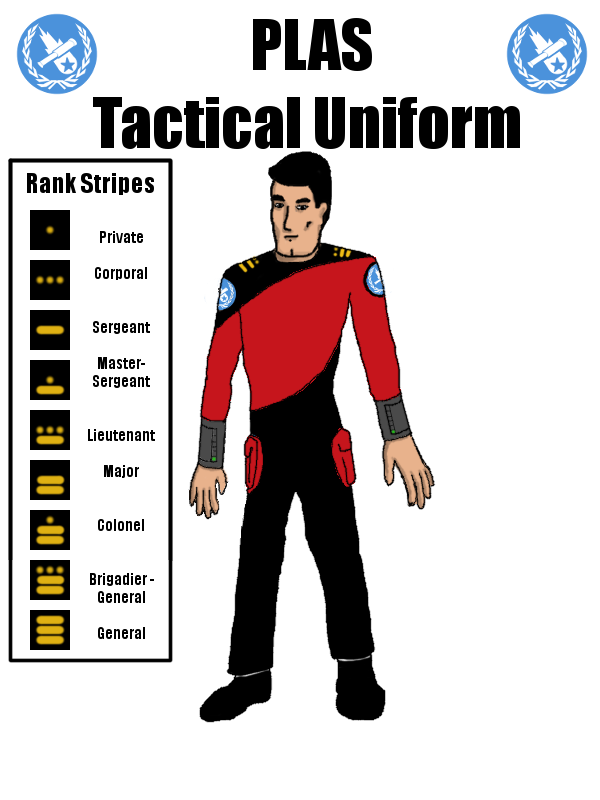The interstellar navy is the main military force of the Planetary League, responding to crises large and small across the galaxy.
History
Founded with the Treaty of Kepler in GSC 0, the PLIN was set up as the common defense force for all Planetary League member-worlds, and fought in basically every major engagement in Planetary League history. From the Convergence Wars, to the Robot Wars to the desperate times of the Great Reckoning, the PLIN was there to defend the Planetary League.
After the end of the First Robot War, there was a general consensus among the human population that a common defense was needed to protect humans as they spread across space. This led to the formation of the Planetary League and the PLIN with the Treaty of Kepler. PLIN vessels started accompanying the exploration and colony vessels carrying the first humans to nearby stars. Major shipyards were set up in various locations, as were fortified space stations. The ground and orbital defense of inhabited planets was generally left up to local planetary defense forces, while the navy patrolled the vast regions of space between the planets and stars.
Initially the mission of the PLIN was to be a completely defensive force, but after the founding of the Alien Assistance Agency (PLAAA), they often found themselves also helping non Planetary League members on the request of the agency. As time went on and the corporate states grew in influence, corruption started to take hold in the Planetary League, and the PLIN started to be used to “defend” various economic interests as well.
In the Great Reckoning, as the Planetary League fell, the PLIN fought a desperate defense against the growing Holy Empire of Man, but to no avail. The scattered remnants either fled to join the new Galactic Republic, went underground as resistance fighters, or joined the empire.
Ship Designations
All ships that fly the colors of the Planetary League are designated P.L.S. (Planetary League Ship). Each is also assigned a serial number which consists of a block of three letters, followed by up to 6 digits, followed by up to six Unicode characters.
The first block of letters designate the ship’s means of propulsion.
The first letter designates relativistic (normal space) propulsion, the most common types are as follows: “I” for ion, “H” for metallic hydrogen, “S” for solar sail, “C” for chemical rocket and “N” for nuclear rocket.
The second letter designates the ship’s spatial compression (hyperdrive) type. The most common types are “C” for Casimir stack, “L” for laser, and “T” for tesseract
The third letter is always “S” for ship.
The second block of digits represents the basic hull design/ class.
The third block of characters designates a specific vessel.
Small Craft
The A-550 Thunderhawk was an iconic design, and one of the most powerful attack craft in the galaxy during the prime era-1.
The Aurora Shuttle was one of the most ubiquitous shuttle designs in the time of the Planetary League, and was extensively used by the PLIN.
Divisions
The Planetary League Marines are one of the main subdivisions within the Navy. Their role is twofold, to board hostile spacecraft, and to make landing assaults on planets.
These paper-craft cutouts of PLIN Marines are suitable to 25mm-scale games / 1” grids.



























